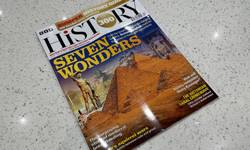That’s no coincidence, because their financials continue to suffer as print ad sales and circulation revenues decline faster than digital advertising can grow.
Of course, it’s not so easy to gauge the true health of the industry, now that MPA doesn’t report print advertising numbers, and AAM (née ABC) has been similarly pressured by publishers into releasing six-month statement data in stealth mode. (Simply failing to mention their release, or provide any tallies of members’ data, has been enough to deter the press from issuing their twice-annual pronouncements about circulation declines equalling the death of print magazines.)
Time Inc
But we do have the numbers reported by the big public companies. Time Inc’s – not (yet) much muddied by non-magazine-brand holdings – are most revelatory. Bear with me for a moment, please.
For 2016’s first half, Time Inc’s total company revenues rose $6 million or less than 1%, to $1.46 billion. Total ad revenues rose $13 million or 2%, to $786 million. Digital ad revenue jumped $67 million or 45%, to $217 million; and print and other ad revenues declined by $54 million or 9%, to $569 million. So the advertising revenue stream now accounts for 54% of total company revenue (low, by historical standards). Print ads, while losing share to digital, still account for nearly three-quarters (72%) of total advertising, and 39% of company revenues. Digital ads represent 28% of ad revenues, and 15% of company revenues.
Total circulation revenues declined $30 million or 6%, to $474 million, including a $16-million or 5% dip in subscription revenue, to $315 million, and a $17-million or 11% decline in newsstand revenue, to $142 million. That means circulation as a whole accounts for 31% - and the newsstand accounts for just 9.7% - of total company revenues.
While digital advertising’s growth was substantial, it contributed a relatively modest $18 million more than the “other” revenue category, which includes marketing and support services provided to third parties, branded book publishing, events, and licensing. The good news, given the trends in the advertising and circulation streams, is that this third stream grew by $23 million or 13%, to $199 million, or 14% of total company revenue. (Meaning, among other things, that single-copy sales are now less important than “other” revenues at one of the world’s leading newsstand publishers.)
Little wonder that Time Inc cut about 150 sales, marketing and editorial jobs over a few weeks in late summer, amid one of its most far-reaching reorganisations in many years. As with nearly all initiatives at Time Inc now, the restructuring – most notably the elimination of the ‘publisher’ title and the regrouping of sales into seven cross-brand product categories – is meant to help boost digital ad sales.
In a development that would’ve been a lot more surprising a few years ago, it was also revealed, more or less in tandem with the reorg announcement and job cuts, that activist investment firm Jana had taken a 4.9% stake in Time Inc.
Meredith
Meanwhile, thanks to growth in local television and other non-publishing revenue streams, and the addition of circulation and advertising revenues from the licensing of Martha Stewart’s publications and purchase of Shape, Meredith Corp as a whole saw record revenues and healthy EPS performance (excluding special items).
But with the exceptions of Allrecipes and EatingWell, organic, as opposed to acquired, growth in the magazine division, aka National Media Group (NMG), has been sluggish. Hence the news of Meredith’s own big reorg, also in late summer. In addition to promoting NMG president Tom Harty (creator of the advertising performance guarantee that’s attracted some significant ad revenue) to company president, Meredith promoted (surprise!) the president of digital, Jon Werther, to succeed Harty as NMG’s president.
The heads of the Allrecipes and EatingWell brands were also promoted to broader roles – notably the latter brand’s CEO, Tom Witschi, to president of Consumer Products, overseeing circulation, brand licensing, ecommerce and content licensing. Circulation is also being given renewed attention via the revival, after more than five years, of the title VP, consumer marketing. The hire: Steve Crowe, who served as Time Inc’s VP, consumer marketing for fifteen years, among other positions.
As I write, WWD is reporting that, due to this year’s downturn in ad spending by luxury brands and retailers – including in crucial September fashion issues (which in 2015 were robust enough to offset other losses) – Condé Nast is also rumoured to be poised for a round of job cuts. Supposed objective: “cutting out the hefty salaries left over from Condé’s golden years to make room for more digitally savvy – and bottom-line friendly - employees.” A Condé restructuring, not dissimilar to that at Time Inc (and Hearst), to “[group] publishers by category or [reduce] its roster of thirteen or so publishers down to about six,” may also be in the works.
When you also begin reading that Hearst Magazines, long a bastion of no-nonsense, bottom-line-focused management, is telling its employees that the company “is tightening budgets across the board” – including a hiring “chill” that’s spawned rumours of possible job cuts later this year – you have some idea of how much those luxury-brand ad cutbacks have hurt. That advertising slump in large part reflects retail spending cutbacks by tourists to New York and other big US cities, or so the retailers and brands report.
Will surging digital advertising revenue ultimately carry the day? That would look a lot more certain if Facebook and Google were not routinely issuing directives and changes in course with zero concern for the effects on their publisher “partners”. Meaning the publishers now spending huge sums to supply the digital giants with (usually) free content, in the hope of building enough traffic to win some of the small and dwindling number of ad dollars not being sucked up by those same giants.












